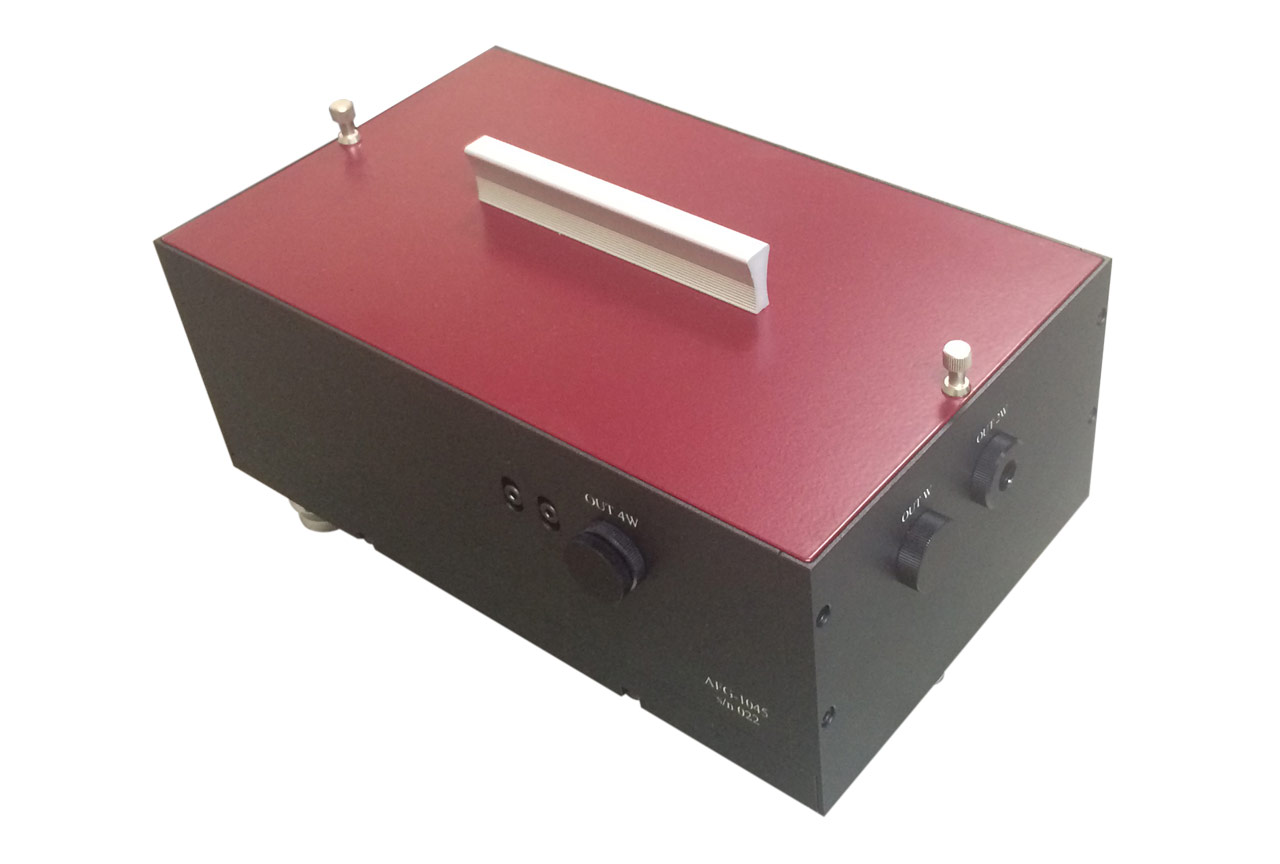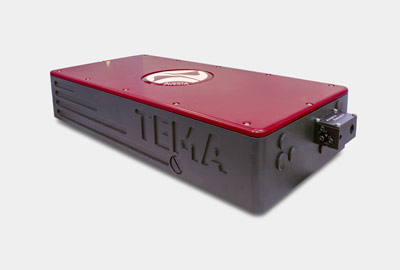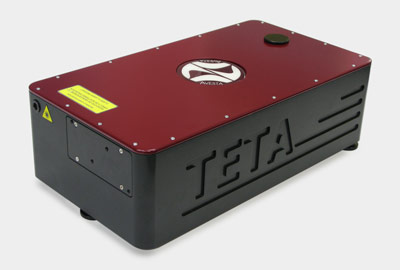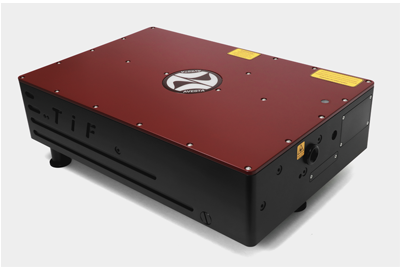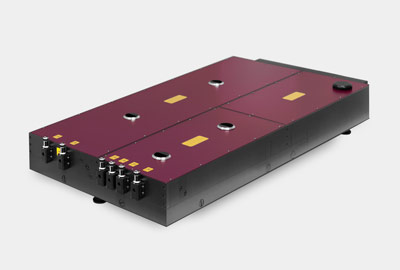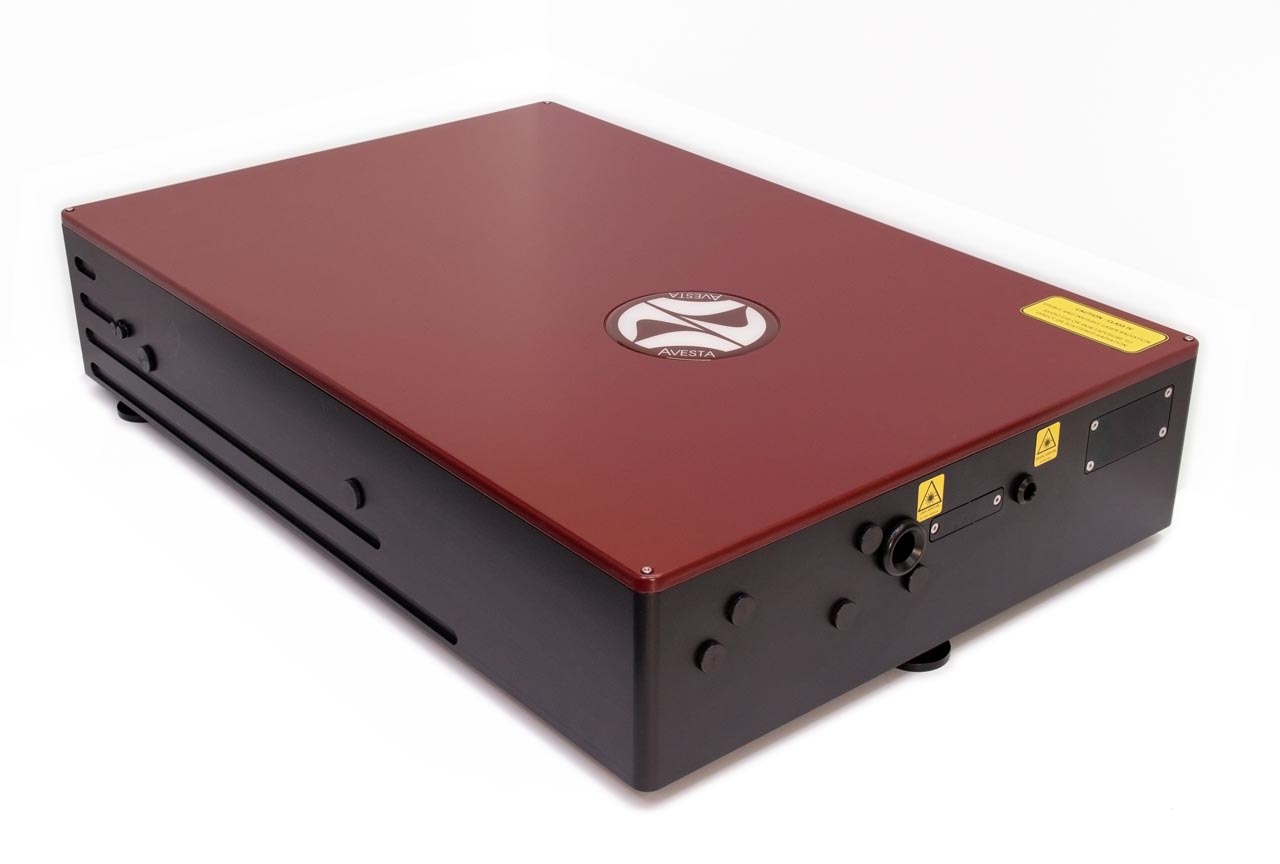AFsG. Second and Fourth Harmonic Generator
| AFsG-O (for oscillators) |
AFsG-A (for amplifiers) |
|||
| Possible input wavelength range* | 820-1600 nm | |||
| Input wavelength tuning range** | 50-100 nm | |||
| Output wavelengths*** | 410-800 nm (SH) 205-400 nm (FH) |
|||
| Input pulse duration | >50 fs | |||
| Input polarization | linear, horizontal | |||
| Input average power | 0.3-3 W | <10 W | ||
| Input pulse energy | <2 uJ | 2 uJ - 10 mJ | ||
| Input beam dia at level of 1/е^2 | <2 mm | <8 mm | ||
| Conversion efficiency**** | 20-50% (SH) | 3-8% (FH) | 30-50% (SH) | 5-10% (FH) |
| Pulse broadening | <100 fs (SH), <1000 fs (FH) | |||
| Output polarization | SH - linear, vertical; FH - linear, horizontal |
|||
| Dimensions | 480x222x192 mm | |||
| * - may be covered by several exchangeable optics sets, please indicate the desired wavelength range upon your request; ** - typical with one optics set, depends on exact central wavelength and pulse duration; *** - defined by input wavelength; **** - defined by input pulse energy and input pulse duration. |
||||
Second and fourth harmonic (SH and FH) generators are used for subsequent doubling of optical frequency for a wide range of input wavelengths produced by various ultrafast laser sources. The sources may be titanium-sapphire femtosecond lasers (Ti:S, 820-1000 nm), various ultrafast solid-state and fiber lasers around 1030-1064 nm region, chromium-forsterite oscillators (Cr:F, 1230-1270 nm), as well as other ultra-short pulse sources including parametric light conversion systems. The principle of operation is based on second harmonic generation in a non-linear crystal with phase-matching technique. The units provide highly efficient stable output with good beam quality and little pulse broadening in fs scale.
The models are subdivided into two main branches: the AFsG-O-W for usage with ultrafast oscillators (multi-MHz rep. rates with nJ-level output) and the AFsG-A-W with increased input aperture and modified layout for usage with amplifier systems (single-shot to several MHz, uJ- and mJ-level output). The "W" in the model name takes on the exact central wavelength value for a certain model, e.g. the ATsG-A-1030 (i.e. designed for an amplifier with ~1030 nm output).
A different approach may be taken in order to get fourth harmonic wavelengths with input wavelengths shorter than 820 nm (as there is a limit to conventional NL crystals for SH conversion for input wavelengths shorter than 410 nm). Please refer to the AMG harmonic generator system in SFG modification for sum frequency generation by mixing of third harmonic and fundamental wavelengths.
Related products
Latest News
Ti:S oscillator with up to 3 W output power at 100 fs
We have ramped up the maximum available output power for the TiF-100 series to more than 3 Watts at 800 nm, 100 fs, 80 MHz. The tuning range has also been extended to 720-950 nm, while an optional modification that covers 850-1040 nm is also available. The system features a high-power low-noise integrated DPSS laser […]
TiF-100ST-F6 femtosecond Ti:S oscillator with Frep locking for multiphoton microscopy at CANDLE, Armenia
The TiF-100ST-F6 femtosecond Ti:S oscillator with a built-in pump laser, also equipped with the ALock PLL electronics unit for pulse repetition rate locking to an external RF source has been installed at the Synchrotron Research Institute’s CANDLE facility in Armenia. The setup has been developed and commercialized during the joint Russia-Armenia project supported by FASIE (Innovation […]



